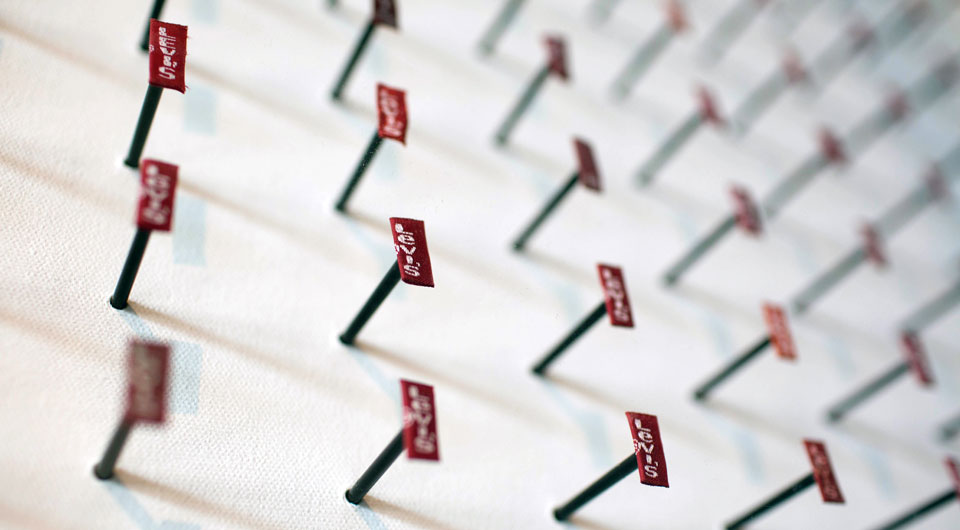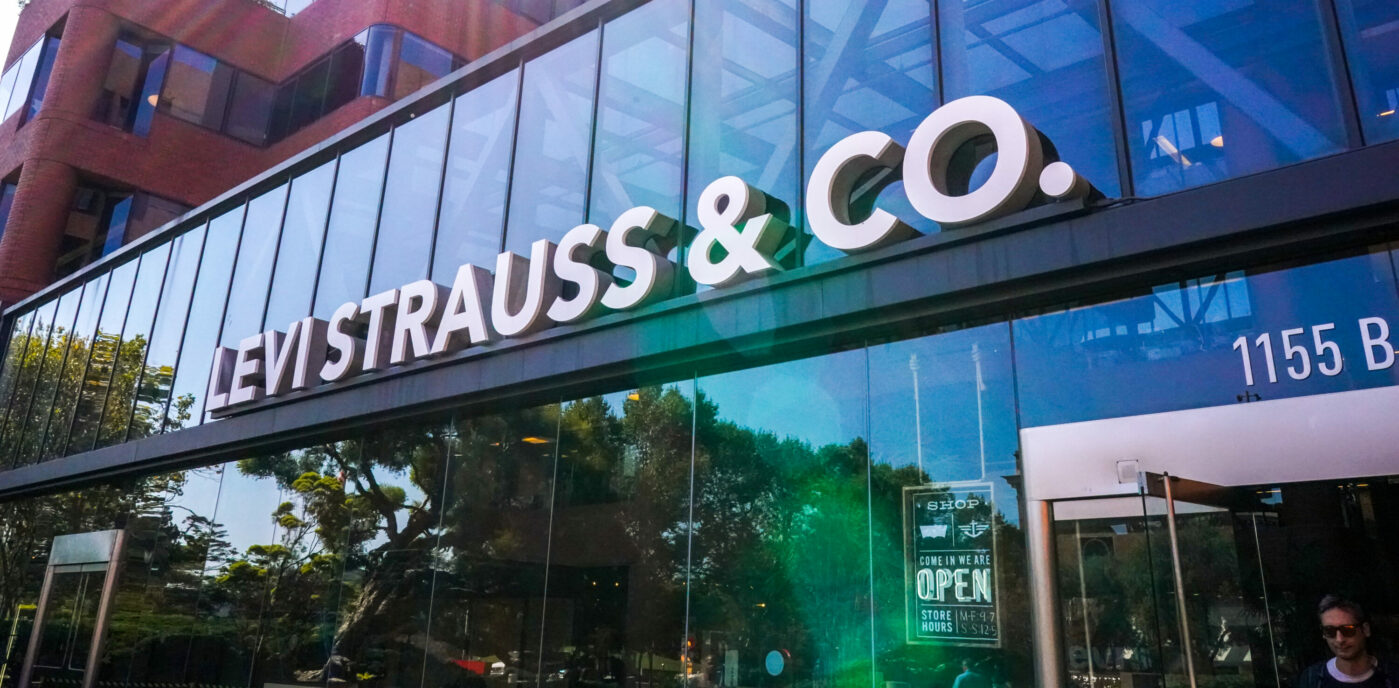It’s small — smaller than your pinky fingernail. And it’s bright — a piece of fabric, a contrasting blip against your favorite 501® jeans or denim shirt. Though innocuous, most know the Levi’s® Tab stands for quality and craftsmanship synonymous with the brand.
The classic red Tab Device, as it’s legally known, is undoubtedly an enduring symbol of Levi’s®. Who knew a small piece of fabric could remain such a powerful marker of a global brand? Levi Strauss & Co. certainly was invested in it, which is why it has spent more than 80 years protecting not only its exclusive use to the Tab trademark, but to the quality it has come to represent.
In the 1950s and 1960s, Levi’s® started adding different-colored Tabs to other Levi’s® clothing. For example, there was the black Tab with gold lettering for products treated in the new Sta-Prest process — which guarded against wrinkles. But affixing a red Tab on the 501® jeans never changed, according to LS&Co. Historian Tracey Panek.
Research recently conducted by the Consumer Insights team at LS&Co. shows that, out of all of the product branding and iconography in the market, the red Tab is among those resonating most strongly with customers, according to Barb Gollert, Levi’s VP of Global Merchandising and Product Operations.
Though the Tab itself has changed very little over its lifetime, key differentiations in its gradual evolution have caught the eagle eyes of everyday customers and vintage collectors alike. So if you find yourself wondering about that orange Tab — or the red Tab with nothing on it — let this tale of Tabs be your guide.
‘LEVI’S’ Red Tab
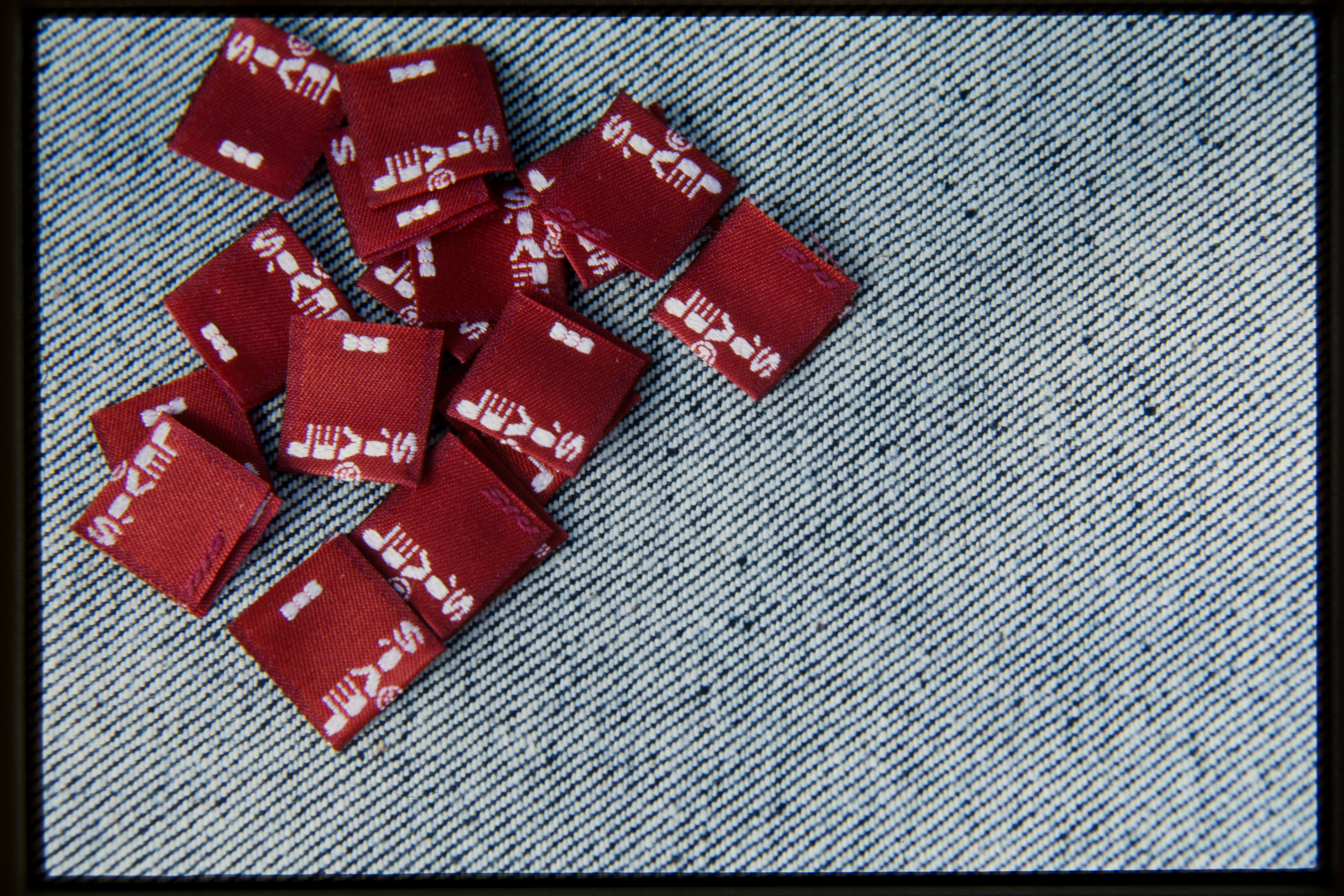
Levi Strauss & Co. co-patented the idea for blue jeans, manufacturing them starting in 1873. When the patent expired, competitors everywhere were also able to manufacture riveted clothing. So, LS&Co. needed an easy way to stand apart. First, we used the Arcuate design, which marked the jean back pockets. We then added the two-horse pull-logo — trademarked around 1890.
When competitors started copying the Arcuate, which wasn’t trademarked until the 1940s, Levi’s® felt it needed a new differentiator. In stepped in National Sales Manager Chris Lucier. He was the one who thought of placing “a folded cloth ribbon in the structural seam of a rear patch pocket.” Thus, the Levi’s® Tab was born.
The red Tab, with the word “LEVI’S” woven onto one side of the tab in white, appeared on our 501®s in 1936 and, later, on our denim jackets.
Red Tab with Lowercase ‘e’
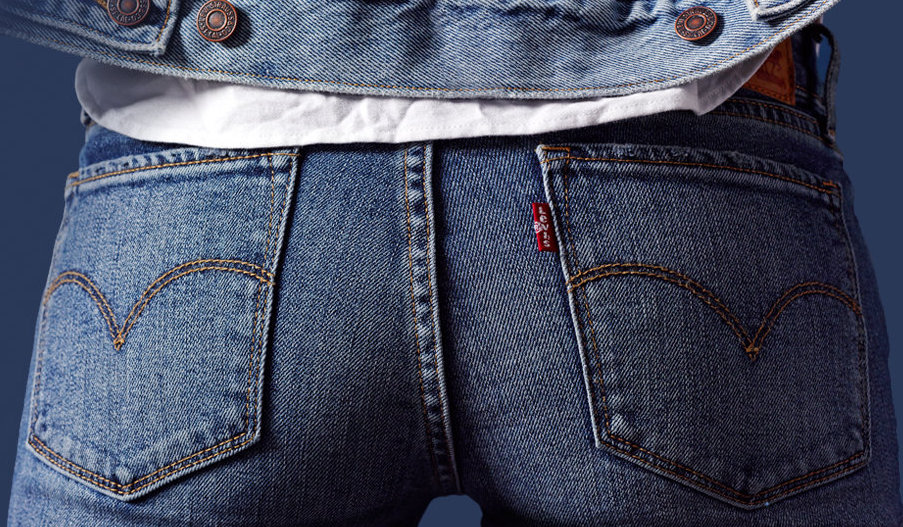
Although the red Tab has remained affixed to Levi’s® since its creation, the Tab lettering took on different forms in very subtle ways, Panek says. In the 1950s, the brand started making double-sided tabs, where the white “LEVI’S” lettering was visible on both sides. In the early 1970s, instead of all-caps “LEVI’S,” it changed to a title-case “Levi’s” — with a lowercase “e.” The “E” font differentiation became a mark among collectors of a vintage piece. Though the Tab was and is a trademark, its evolution made it more of a timestamp (think rings on a redwood tree) for collectors and fans of the brand worldwide.
Red Tab with

Every now and then, you’ll find a blank red Tab: a red Tab with nothing but the trademark symbol on it.
Though concerned customers have raised the blank red Tab as a red flag for a knockoff, rest assured, these are authentic Levi’s® and that is a fully intentional blank tab.
Since the Tab device is one of the world’s most frequently copied trademarks, it requires some extra moxie on the part of LS&Co. to protect the company’s exclusive legal right to market clothes with the Tab. It’s therefore necessary to produce a certain percentage of Levi’s® products with a plain Tab with only the ® symbol on it. This shows that LS&Co. owns trademark rights in the Tab itself, not just the Levi’s® wording trademark.
“You can be assured that this is not a defect or an error in the manufacturing process,” Tracey says.
Orange Tab
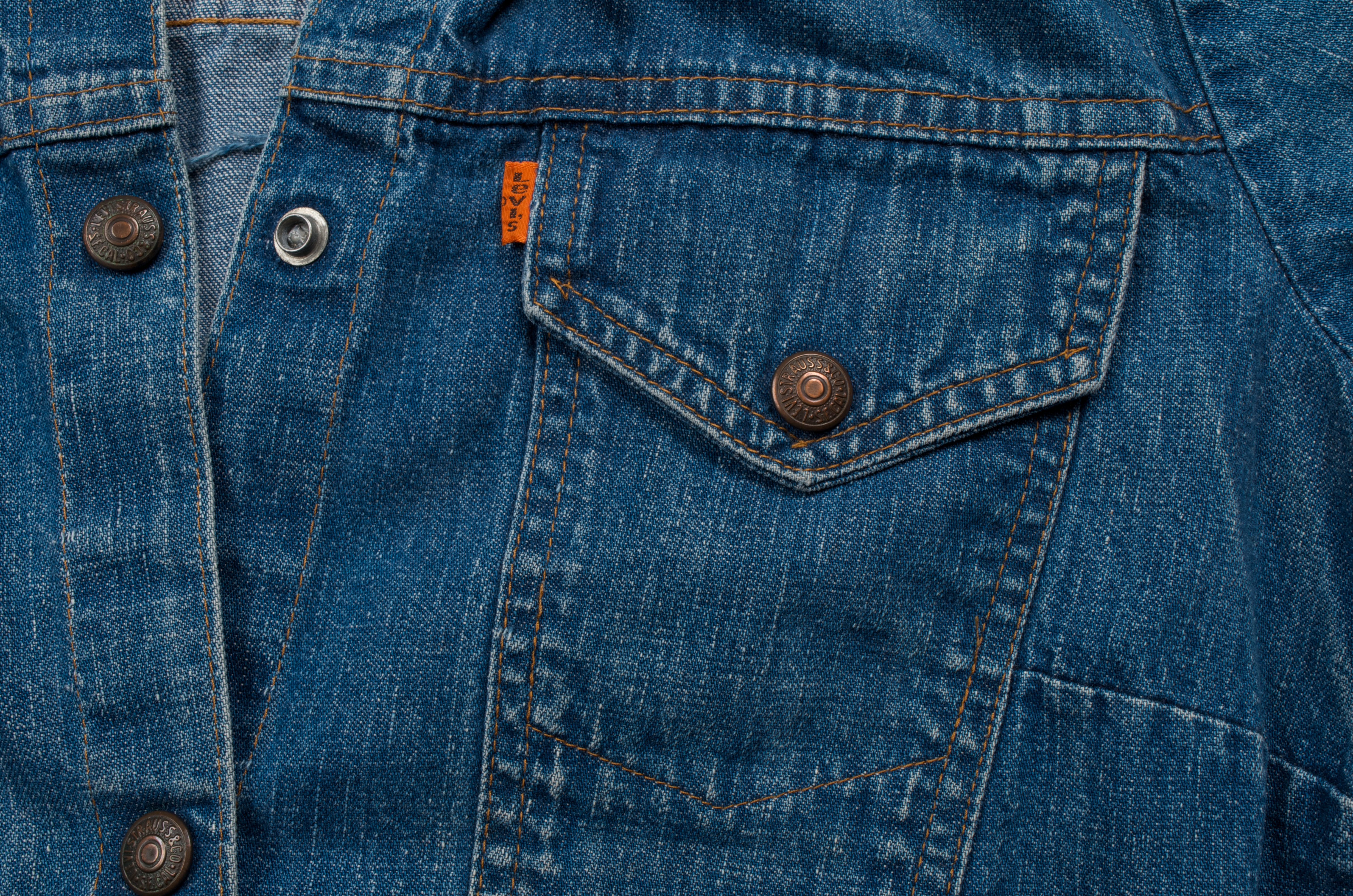
Where the red Tab was considered a trademark of the 501®, the brand wanted to differentiate other kinds of Levi’s® clothing — such as the fashion denim, like bell-bottoms and boot cuts, which came out in the 1960s. With that, the Levi’s® orange Tab was used to set these apart.
With the orange Tab, designers got to be a little more experimental, incorporating more trendy and unusual silhouettes and stepping out of the stringent requirements put behind red Tab clothing. Today, those early original orange Tab Levi’s® items – which include shirts, jeans, hats, and accessories – are sometimes considered collectibles. Of course, the orange Tab isn’t dormant – it currently shows up on select Levi’s® Vintage Clothing items and will return this spring for an upcoming collection.
Fresh Produce

Continuing in the vintage vein, those of you who were Richard Linklater-level fashionable in the 1970s will remember Fresh Produce, denoted with a tab featuring a tiny carrot. Barb says the line was especially popular when she first started with the brand in Canada in 1975.
Blue Tab
Levi’s Made and Crafted, the brand’s premium line, carries a blue Tab.
Silver Tab
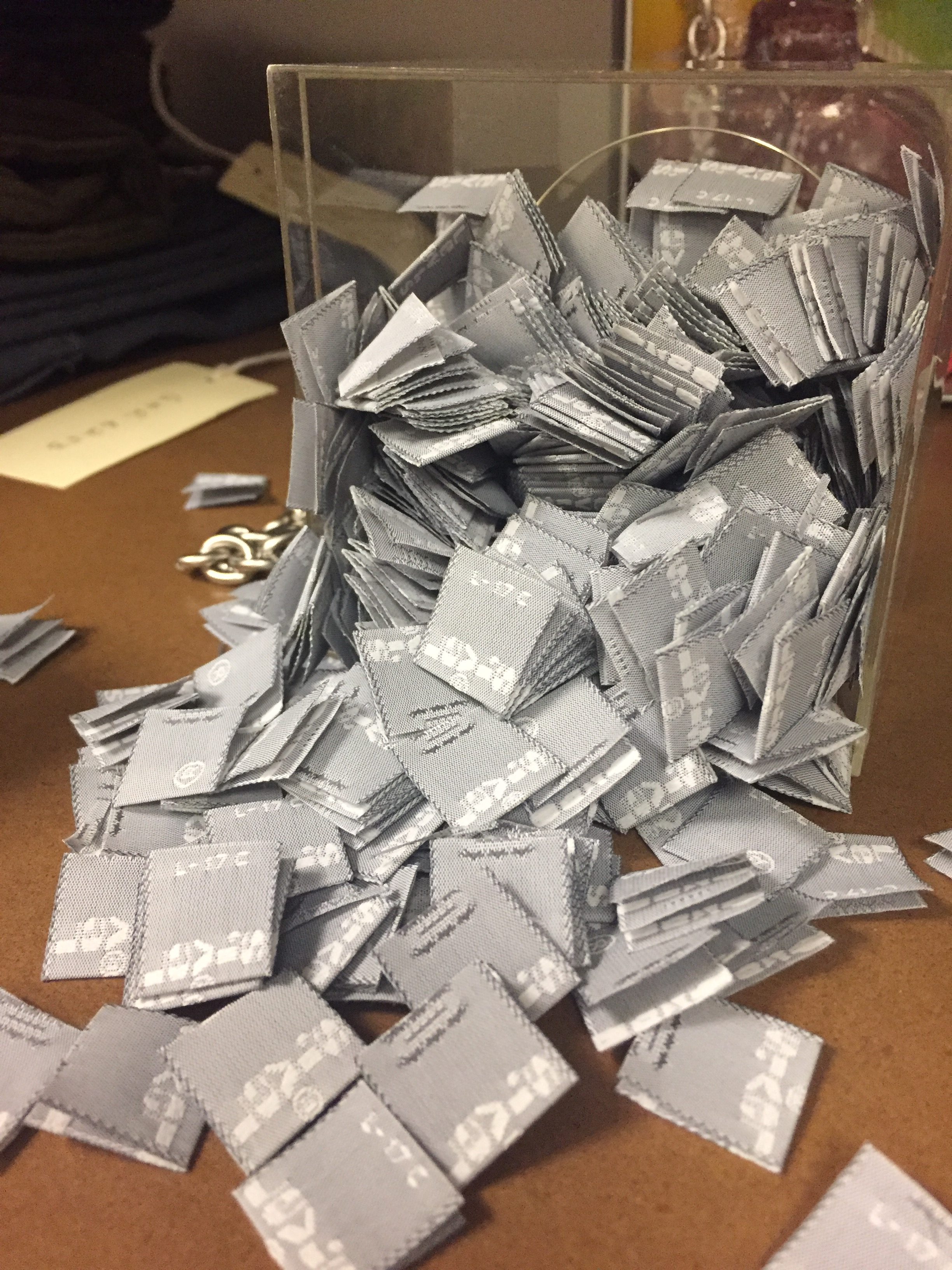
Silver Tab was introduced in 1988, coming in at the forefront of the baggy trend that defined late-80s and ’90s grunge denim. Barb, who was the Director of Merchandising for Silver Tab at the time, says strategically, Levi’s® was bang-on for that trend, and it was a huge success for the brand. The lesson? You can tap into a trend and still be brand-right.
Assorted Color Tabs
Why stop there? As new decades and new styles rolled out, so did a handful of new color tabs. They represented different lines of clothing, from corduroy flares to boot-cut jeans to a whole category of women’s wear.
Khakis from the ’90s had their own distinctive tab. You’ll find black tabs on women’s black denim, and some of the men’s — purely a rearview aesthetic decision, Barb says.
Despite the use of these different colors at different points in the brand’s history, one thing is for sure: The Tab device “is as unique to Levi’s® as a brand and something we still trademark today,” Tracey says.



